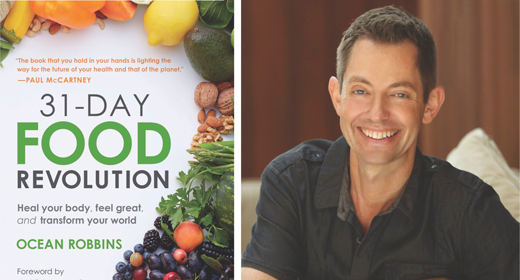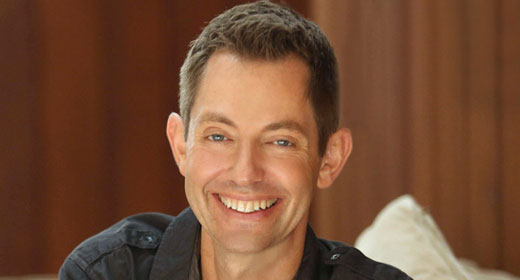by Robert Peel: A NUMBER of years ago a brilliant young biologist who was suffering from a physical and mental breakdown was given a copy of “Science and Health with Key to the Scriptures” by Mary Baker Eddy.
 As he read through the first chapter with a certain curiosity but little enthusiasm, he thought to himself, “This really isn’t my sort of book; it simply isn’t the language or the kind of ideas that make sense to me.” Yet he felt himself impelled to go on reading, and before he had finished the book he was healed.
As he read through the first chapter with a certain curiosity but little enthusiasm, he thought to himself, “This really isn’t my sort of book; it simply isn’t the language or the kind of ideas that make sense to me.” Yet he felt himself impelled to go on reading, and before he had finished the book he was healed.
More recently a young woman in Bombay, Western-trained, with an agnostic background, was given a copy of Science and Health. Halfway down the first page of the Preface she came to the sentence (p. vii), “Ignorance of God is no longer the stepping-stone to faith.” As she read it a wave of astonishment swept over her. “A woman dared to write that!” she thought. A woman had dared to challenge the agelong basis of religious faith and dogma, not in the name of agnosticism but of Christianity. She had dared to say that God could actually and demonstrably be known. At that instant the knowability of God broke on the Indian woman’s educated skepticism like a light.
These are only two examples of the innumerable ways in which individuals during the past one hundred years have found Christian Science. Some have drunk it in like a thirsty traveler in the desert; some have doubted and resisted and fought their way to an acceptance of its revolutionary metaphysical propositions. But child or scholar, housewife or banker, mechanic or artist, each one who has caught even a distant glimpse of the unclouded face of Truth has shared in some small measure the experience that made Mrs. Eddy the Discoverer of Christian Science.
At the heart of that experience is the perception of a God who is infinite Love and of a creation that is infinitely lovely— free from all the ruthless tyrannies of matter, all the dread and doom of mortality. This is the vision of the kingdom of God as heralded in the New Testament; but, more than that, it is the actual experiencing of the kingdom.
Thus when in February, 1866, the allness of Spirit and the consequent unreality of matter dawned on Mrs. Eddy for the first time, that illumined moment of discovery did not leave her where she was. It lifted her from what was thought to be her deathbed into the freedom and activity of the great spiritual role she was destined to play in world history. The vision began at once to transform the very foundations of her human experience, to bring into evidence the unlimited energies and capacities of the man who is made in God’s image, and to flood with light the pages of the Bible, to which she turned for a scientific understanding of the Truth that had healed her.
The moment of revelation had come to her as she was reading of one of the healings of Christ Jesus; but continued study, prayer, reasoning, spiritual growth, and practical experience were necessary over a period of years before Christian Science unfolded to her in its full amplitude and coherence. She was exploring a realm of thought where only the Founder of Christianity had been before her, and his example was never far from her thought as she diligently searched the Scriptures for the Science that underlay his life and works.
In “Retrospection and Introspection,” she writes: “Jesus of Nazareth was a natural and divine Scientist. He was so before the material world saw him. He who antedated Abraham, and gave the world a new date in the Christian era, was a Christian Scientist, who needed no discovery of the Science of being in order to rebuke the evidence. To one ‘born of the flesh,’ however, divine Science must be a discovery. Woman must give it birth.”
Woman is not ordinarily thought of in connection with scientific discovery, yet it is clear that her intuitive perception may reach to fundamental facts and relations of being which elude the methods of either theoretical or experimental science. Certainly spiritual-mindedness rather than brilliance of intellect must be the essential prerequisite to discovering the Science of Christianity, in which the radical logic of love produces results that confound accepted categories of thought.
It is hardly surprising that Christian Science arrived not with a fanfare of scholarship and traditional learning but with something closer to the humble though remarkable circumstances of Jesus’ birth. Indeed, what Mrs. Eddy writes of Mary’s conception of Jesus might equally well be said of her own discovery of Christian Science (Miscellaneous Writings, “No advancing modes of human mind made Jesus; rather was it their subjugation, and the pure heart that sees God.”
Few among the sons of men might have chosen Mrs. Eddy for the revelation whose coming was to fulfill Jesus’ promise that in time the Comforter, or “the Spirit of truth,” would appear and guide his followers “into all truth”. Yet if Christian history proves anything, it proves that God’s ways are not as men’s ways, and the appearing of Christian Science was no exception to this rule.
What is apparent to the discerning Christian eye is that Mrs. Eddy had been uniquely fitted by her early experience to follow Jesus’ command to Simon, “Launch out into the deep”, and to leave all halfway human positions behind her. Though endowed with an unusual love of God from her earliest years, she had been subjected to years of sternest preparation for the daring voyage into new worlds of thought that would open up to her in 1866.
An indispensable part of this preparation had been the stripping away of one material reliance after another: home, family, health, supply, husband, child, friends. The Christianity of her day taught that such deprivations should be accepted with meek resignation as the outcome of God’s inscrutable will, but from the depths of her spiritual conviction she had rebelled against that teaching. If there was a lesson to be learned from her hardships, she would learn it—and she did, for in those years of preparation she came to see how utterly false were all hopes that rested on matter. But eagerly, persistently, importunately, she continued through her early trials to seek for the answer that she knew must lie in God’s unfailing love for His creation—an answer that would enable her to conquer evil, not submit to it.
For twenty years before 1866 her search for health through various curative systems, including homeopathy and mental or magnetic healing, had educated her thought toward a perception of the mental nature of disease. Thus when the revelation of God, Spirit, as All-in-all dawned on her at her moment of crucial need, she was prepared to recognize matter as a false mode of thinking and to repudiate with the spiritual boldness of the Master himself the entire evidence of the senses.
It was no human feeling of self-sufficiency that launched Mrs. Eddy into the tempestuous waters that confronted her. Something of the nature of her experience at this time is hinted at in a single sentence in her book “Rudimental Divine Science” (p. 17), “The Discoverer of this Science could tell you of timidity, of self-distrust, of friendlessness, toil, agonies, and victories under which she needed miraculous vision to sustain her, when taking the first footsteps in this Science.” Without her vision of the inexhaustible and irresistible power of good, the whole enterprise would have been unthinkable.
Her actual search of the Scriptures for a full understanding of the divine Principle and rules of Christian Science was an infinitely sweet and rewarding task, as she has made plain in her writings. As the light of revelation poured in, her heart was filled with unspeakable joy, and the healings that followed in confirmation of her findings brought with them deep assurance and encouragement.
The challenge came in communicating to the world what she was discovering, for the whole entrenched belief of life in matter seemed to concentrate itself in outraged opposition to the message and the messenger. While those who were healed were grateful and even enthusiastic, they all too often took alarm as gradually they realized the demands the new teaching made on them.
In some sense everyone who has ever glimpsed a new truth, however small or fragmentary, should be able to understand this phenomenon. An individual, for instance, finds in the unexpected compassion of a friend a new dimension of love, and this means that he has seen a little further into the real structure of the universe. Overjoyed, he undertakes to put his new insight into practice. But very soon old ways of thinking and feeling are roused to protest that he is being unrealistic, that unselfishness doesn’t pay, that he’d better mind his own business and not be a do-gooder. All the self-assertive limitations of small-minded thinking seem determined to blot out what he has discovered with such delight.
The supreme example of human resistance to Truth—and of its overcoming— is found in the life of Christ Jesus. The greatest exemplar of Love the world has ever known was nailed to a cross by the hatred his example had aroused. Yet in the triumph of the resurrection he proved the ultimate powerlessness and falsity of all that opposes itself to God, as well as the indestructible reality of the Life and Love that are God. As Mrs. Eddy drank of his cup and felt the inspiration of the risen Christ in her own life, she was able to face opposition with the unshakable assurance of Truth’s ultimate victory.
Very soon, however, she learned that it was not enough to have learned the nature of divine Mind’s perfect creation. In order to complete and to safeguard her discovery, she must also understand the workings of the carnal, or mortal, mind, described by Paul as “enmity against God”. Of this necessity she writes (Miscellaneous Writings: “I shall not forget the cost of investigating, for this age, the methods and power of error. While the ways, means, and potency of Truth had flowed into my consciousness as easily as dawns the morning light and shadows flee, the metaphysical mystery of error—its hidden paths, purpose, and fruits—at first defied me. I was saying all the time, ‘Come not thou into the secret’—but at length took up the research according to God’s command.”
Her realism, as well as her determination to follow wherever Truth led, is apparent in such a passage. She writes also (see Retrospection and Introspection, pp. 37, 38) that it was not even possible for her to publish the first edition of Science and Health until she had included in it a partial explanation of what she had then discovered of the mesmeric workings of mortal mind. Honesty would not allow her to withhold any part of her discovery that might be necessary for the complete elimination of error.
Science and Health, to which in the course of several major revisions she gave its present full title “Science and Health with Key to the Scriptures,” is the record of her discovery in its healing application to the grievous ills of the world. Each revision brought out more clearly the basic facts of being as she had gained them through what she describes as revelation, reason, and demonstration. The book, in its final form, is the most important single fruit of her discovery.
In the last words of the Preface she commits the pages that follow to honest seekers for Truth. She herself had been a seeker before she became a discoverer. Revelation does not come to the mentally passive, and the very title “Discoverer” points to active spiritual exploration as well as humble listening for God’s guidance at every step.
The same demand is made of anyone who would understand either the discovery or the Discoverer—and the two are inseverable. Each reader of Science and Health must in a measure discover Christian Science for himself. Even a lifetime’s study of the textbook will never yield up the inexhaustible riches of revelation that are there for him to discover and to demonstrate; but in order to appropriate these riches, he must be prepared to abandon cherished human positions and venture into a bracing new world where the demands of Principle are infinite—and the rewards of Love are sure.
Christian Science came through revelation, reason, and demonstration, and it needs some measure of revelation, reason, and demonstration to be understood even in part. But always as the student of Christian Science moves forward along the way Christ Jesus walked, he finds the path illumined for him by the divine Science that Mrs. Eddy labored so valiantly and devotedly to share with the world.
Each advancing step will help him to understand a little better the Christ-example that led her, the Christ-spirit that inspired her, the Christ-power that sustained her. Each deepening experience will show him a little more clearly the meaning of her words (The First Church of Christ, Scientist, and Miscellany, “Bear with me the burden of discovery and share with me the bliss of seeing the risen Christ, God’s spiritual idea that takes away all sin, disease, and death, and gives to soul its native freedom.”
If ye then be risen with Christ, seek those things
which are above, where Christ sitteth on the right
hand of God. Set your affection on things above,
not on things on the earth. For ye are dead, and
your life is hid with Christ in God. When Christ,
who is our life, shall appear, then shall ye also
appear with him in glory.—Colossians 3:1-4.








































